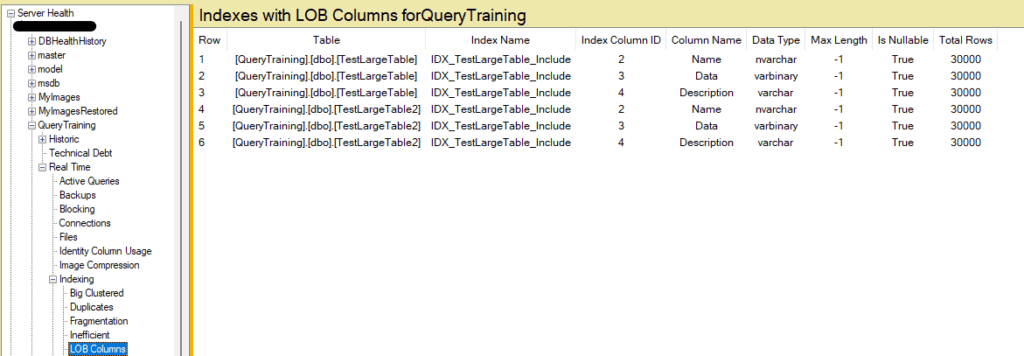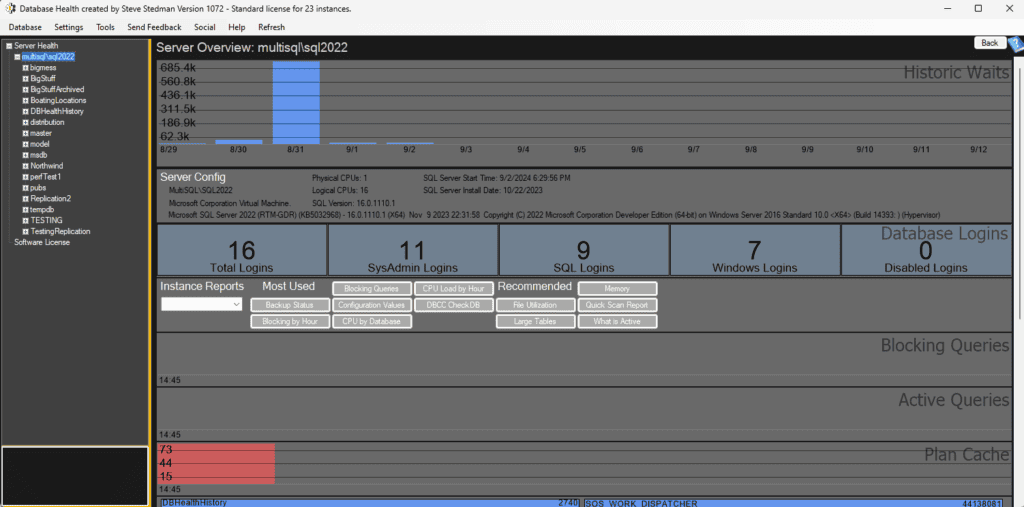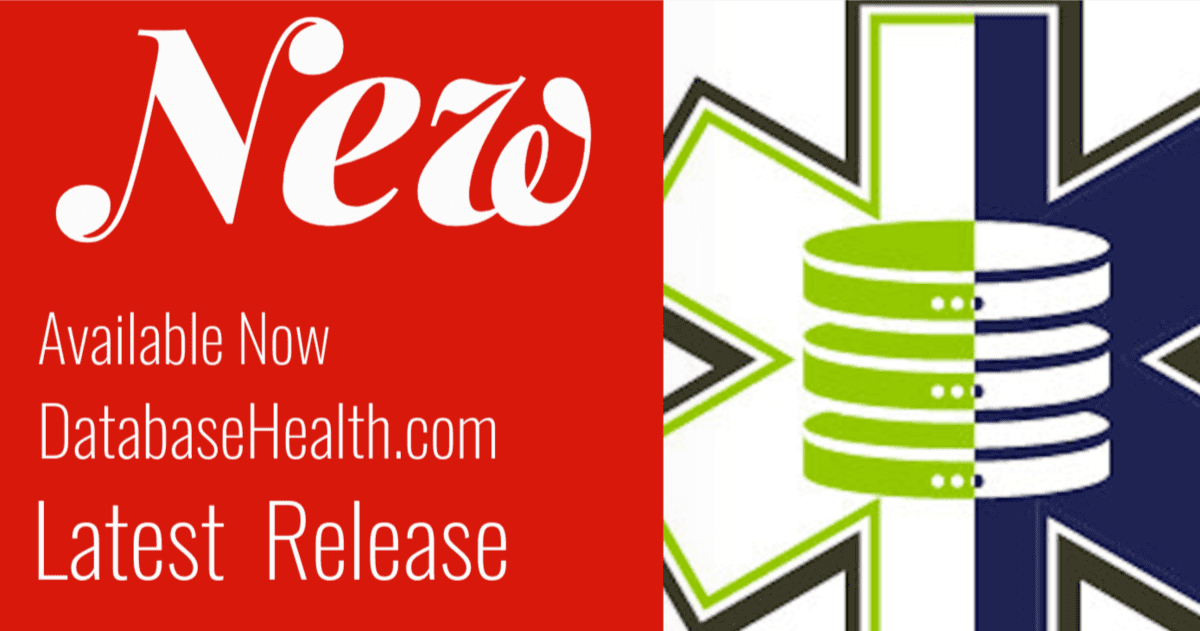Introducing the Latest Features in Database Health Monitor for September 2024
Hello everyone, Steve Stedman here! I’m excited to announce the latest updates to Database Health Monitor for September 2024. Our team has rolled out several new features and improvements that will make monitoring and managing your SQL Server environments even more effective. Let’s take a closer look at what’s new.

Instance Report Panel: The Gray Buttons
One of the most notable changes in this release is the new Instance Report Panel. We’ve adjusted the panel of gray buttons to give you direct access to the reports you run more often, as well as quick access to all the instance reports. This panel is designed to enhance your ability to quickly navigate and retrieve important data about your SQL Server instances, making it easier to monitor their health and performance.

Updated Reports on the Server Overview Page
The Server Overview Page has been updated with enhanced reports:
- Active Queries Report: This report now offers more detailed insights into currently running queries and their impact on server performance.
- Blocking Queries Report: We’ve added the reporting on blocking queries, making it easier to identify and resolve bottlenecks before they become serious issues.

Indexes with LOB Columns
We’ve also introduced a feature to identify Indexes with LOB (Large Object) Columns. Large Object columns, such as those storing extensive text or binary data, can significantly affect performance. This new feature helps you pinpoint indexes with LOB columns, allowing you to optimize indexing strategies and manage storage more effectively.

Dark Mode Improvements
Dark mode has received a major upgrade. The updated Dark Mode now offers better contrast and improved visibility, making it easier to work in low-light environments or for those who prefer the aesthetics of a darker interface. This improvement enhances the overall user experience, especially during extended monitoring sessions.

QuickScan Improvements
QuickScan, one of the most powerful tools in Database Health Monitor, has been expanded with several new checks:
- Large Differential Backups (221): Detects databases with unusually large differential backups, potentially indicating inefficient backup strategies or high data change rates.
- UPDLOCK Causing Blocking (222, 223): Identifies the use of UPDLOCK hints that could lead to blocking and increased wait times, enabling you to optimize query performance.
- User-Defined Assemblies (224): Scans for user-defined assemblies in each database, allowing you to monitor and manage custom code execution.
- Database Snapshots (225-227):
- Check 225: Monitors the number of database snapshots to ensure they are managed properly.
- Check 226: Flags snapshots older than 60 days, which may be consuming unnecessary resources.
- Check 227: Highlights snapshots larger than 250MB and exceeding 50% of the original database size, pointing out potential storage concerns.
- Low Disk Space Alert (228): Alerts you when system disk space is critically low (<5%), giving you time to take action before it affects operations.
- SQL 2019 CU 27 Error (229): Identifies a specific error associated with SQL Server 2019 CU 27, helping you proactively address known issues.
- Remote Query Timeout (230): Checks if the remote query timeout setting is below the default, which could negatively impact performance.
- SA Account Connections (231): Monitors active connections by the SA (System Administrator) account, which could be a security concern.
- TDE Encryption (232): Verifies if Transparent Data Encryption (TDE) is enabled and ensures no required databases are overlooked.

Conclusion
These new features and enhancements are designed to make Database Health Monitor even more powerful and user-friendly. From the new instance report panel to the expanded QuickScan checks, there are plenty of reasons to upgrade and take advantage of the latest tools for maintaining your SQL Server environments.
If you haven’t already, I encourage you to download the latest version of Database Health Monitor at DatabaseHealth.com and experience these improvements for yourself.
Happy monitoring!
— Steve Stedman
More from Stedman Solutions:

Steve and the team at Stedman Solutions are here for all your SQL Server needs.
Contact us today for your free 30 minute consultation..
We are ready to help!
